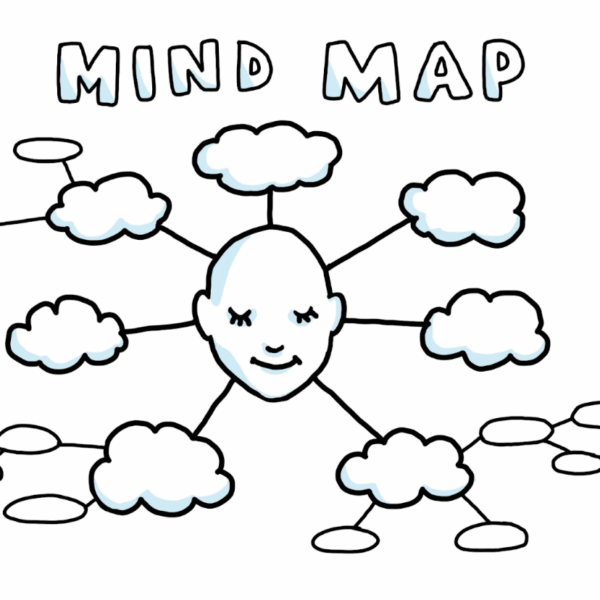
ImageThink created a series of infographics to serve as a slide deck for a TED talk by Ajit Narayanan.
Make Your Next Slide Deck A Head-Turner, With Infographics
If you’ve seen our graphic recorders in action, markers ablaze as they convert your words into pictures in real time, then you know that ImageThink is the expert when it comes to the power of visuals to convey complex information instantaneously. Our live scribing keeps you engaged and perhaps even sparks new ideas as you watch it unfold. Looking at the pic you snapped of the ImageBoard later, you’re inspired by the clarity of your team’s new vision and the energy of the conversation, crystallized in the illustration.
There’s just one problem. Sitting back down at your desk you realize that while the conversation you just had is clear, the presentation you’re preparing for next week’s meeting is still a stack of papers 3 feet deep. It’s packed with crucial data points, but you need to condense it all into a single document that folks can understand even in your absence, without a voice to explain it or keep people interested in the finer points.
This is where infographics—a hand-drawn, effective way to capture key data and educate audiences with easily understood visual stories—come in to play. Just like graphic recording, infographics transform your vision and objectives into bespoke visual metaphors so that people can really see what you mean. They’re the perfect solution to dense text documents that fail to capture attention, replacing them with beautiful images that convey nuanced information in an engaging way.
We can produce your illustration in a variety of media ranging from chalk to digital graphics. The final images can be used in Power Point, on your website, or anywhere you would normally use a printed image.
ImageThink collaborates with clients to create infographics in our studio almost every day. So if you’re tired of getting the memo that no one read your memo, this list of 7 things to consider when collaborating with your infographic artist is for you.
Consider Your Audience
Whether you’re trying to connect with customers, build internal policy adherence, or create an evergreen pitch deck for potential new clients, understanding who your audience is and what they need to hear from you is the first crucial step. When developing your text and content, try to put yourself in your audience’s shoes. What do they need to know to trust you as a partner, or to become invested in the new process you’re proposing? What information could they do without? This is a great way to focus your thinking at the outset of the infographic process, and it is something we discuss whenever we begin collaborating with a client on a new project.

Infographics can be used online to stoke social media conversation.
Consider The Context
Infographics are incredibly versatile and can be used in a variety of contexts from social media posts, to company websites, to slide decks, to printed posters. They can even be developed into timelapses or animated videos. Think about how you would like to use yours. A seasoned infographic artist will ask for the eventual context of the image to best understand how to approach the project with regards to everything from file type to aspect ratio to project timeline.
Get Branding On Board
Infographics can take a fair amount of time and resources, both from your artist and from you. All the more reason to ensure that the final product is something you can hang in your office or post online without worrying about how it matches with your company’s carefully crafted image. An experienced infographic artist will ask you for branding guidelines like color schemes, logos, and style guard rails to meet your needs. Have the conversation upfront to make sure that the artist you work with can work in a style that takes yours into account.

Harness Your Key Themes And Data Points
An infographic should be easy on the eyes, but the foundation it’s built on is concrete information. Consider the value of anecdotal information versus statistical information, and where you might find both. While you might have existing decks or slides to work from, it’s worth taking a moment to consider what additional information might be important to include.
Have too much data? Unsure how to sift through it for the most relevant bullet points? Our studio team is standing by, ready to break out the highlighters and red pens to corral even lengthy documents into something short, sweet, and easily digestible. We’ll harness the resulting text into an infographic that merges your key themes with our visual magic for an illustrated summary that will speak much louder than words alone.

We couch our infographics in visual metaphors that resonate with you and your audience.
Map Out A Visual Metaphor
Now that you and your infographic artist have gone over your objectives and your information, it’s time to get to the fun part: drawing it out! We like to couch the images we create in visual metaphors that resonate with our clients and reinforce the content of the project. If you’re a car dealership setting your 2019-2020 customer outreach strategy, maybe a racetrack metaphor will help get your team’s engines revved up. If your NYC location is a point of office pride, including visual call-outs to the Empire City could be a great way to tailor the image to your taste. Take some time to think about what visuals will make your infographic really feel like your own, and talk with your artist about incorporating them into the final image.
Paint Informational Intersections
The true magic of an infographic lies in its ability to make visible the connections between information that previously went unseen. An experienced infographic artist will draw these connections out—literally—to help your audience understand your message at a deeper level. When we collaborate with a client on an infographic project, we work in a series of iterations, taking into account client feedback along the way. If you feel that certain informational intersections are not being called out visually, let us know. You may be surprised to find ones you didn’t realize were there at the beginning of the project.

ImageThink’s graphic recorders incorporate client feedback into infographics at every step of the way.
Make Sure Your Feedback Is Heard And Incorporated
A great infographic requires great communication between a client and their infographic artist. At ImageThink, we go through three rounds of iterations from sketch to finalized image, harnessing client feedback at every step of the way for everything from composition to iconography to language choice. Be sure to identify any key stakeholders or decision makers from your team that will need to provide input or sign off at the different stages, and get them involved upfront. It will make sure that your team is aligned, and ensure that the graphic we create for you is as useful as possible.
Not sure how to capture your team’s insights? Our account manager will share a custom feedback template to help you compile everyone’s thoughts in one place.
This Is Just The Tip Of The Infographic Iceberg…
Ready to learn more about how we can spice up your slides, energize your office space, and create beautiful and communicative infographics for you or your team? Check out our Facilitation service pages for more details. We can’t wait to draw your big ideas.

